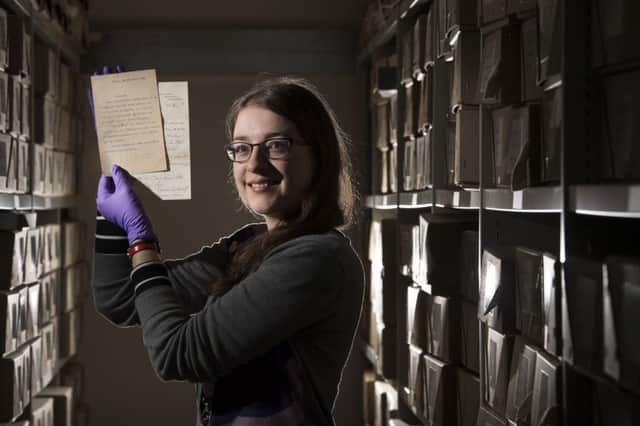Glasgow School of Art rediscovers Victorian letters from cultural greats


Glasgow School of Art (GSA) has discovered in its archive a cache of previously unrecorded letters from some of the greatest artistic and literary figures of the era, including the French sculptor Auguste Rodin, the pioneering science fiction writer H.G. Wells and the celebrated textile artist William Morris.
The correspondence was uncovered during a project to catalogue papers relating to Francis Newbery, who served as director of the GSA from 1885-1917 and played a major role in securing its international reputation.
Advertisement
Hide AdAmong the letters is one from Morris, replying to an invitation to undertake a lecture series in Glasgow in 1889, in which he ruefully recalls a previous trip to the city.
“I have memories of early spring in Glasgow from last year which rather terrify me,” he wrote. Nevertheless, Morris returned north and delivered a well-received lecture at the GSA that year.
Curators believe it is likely a young Charles Rennie Mackinstosh, then an undergraduate at the school, would have been among those to attend the event.
“These letters are incredibly important,” said GSA lecturer and British design specialist, Dr Helen McCormack. “They provide a better understanding of Morris’s relationship with the city, revealing that he was a much more frequent visitor to Glasgow than has been believed to date.
“Equally significant is the date of Morris’s lecture on ‘Arts & Crafts’ to GSA students, as it is very likely that CR Mackintosh would have had the opportunity to attend this lecture while he was still a student here in 1889.
“It is generally agreed among scholars that Mackintosh’s work, not least the building at GSA which bears his name, conveys some stylistic and architectural details determined by the Arts & Crafts ideals.”
Advertisement
Hide AdThe papers were discovered by archivist Rachael Jones in a box of Newbery correspondence previously unrecorded.
“The letters tell us how influential Frances Newbery was as a director,” she told The Scotsman. “He was so involved in the art and design scene of the time.
Advertisement
Hide Ad“They are testament to his great connections in the art world of the late 19th and early 20th centuries.
“He was director during an incredibly dynamic period in the school’s history.”
Also discovered among the papers were two letters from one of the world’s greatest sculptors, Auguste Rodin.
In the earlier of the two letters, sent from Paris on April 29, 1901, Rodin writes to Newbery asking about the public reaction to plasters of two of his sculptures, St Jean and Les Bourgeois de Calais, that had been sent to The Glasgow International Exhibition - the major event that marked the opening of Kelvingrove Museum and Art Gallery.
The papers also include a letter from War of the Worlds author HG Wells, and a letter from one of the original Glasgow Boys, the artist Sir John Lavery.
The letters have now been digitised and can be viewed in the GSA’s online archives.